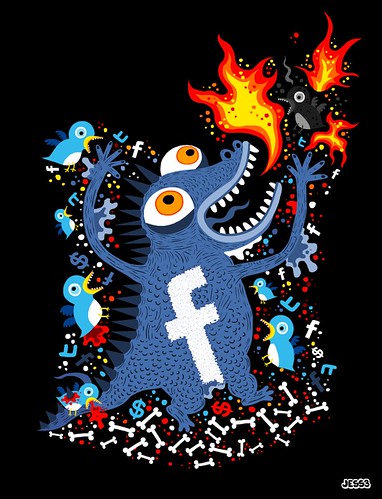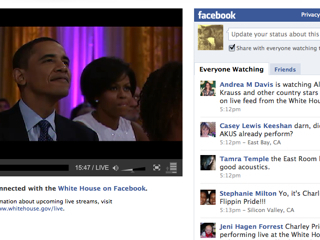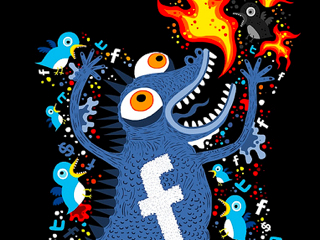

Ever since the explosive growth of Twitter in the early months of 2009, Facebook has been doing all it can to assure itself that it will maintain its spot as the number one social networking site on the Web.
We reported at the beginning of last June about the fact that Twitter was the fastest-growing social network in April, with minutes spent online by users increasing by 3700%. No competitor can sit easy when faced with numbers like that.
So, what followed, were a series of periodic updates to Facebook’s site, that consistently casted the site in a certain light as trying to, one step at a time, one-up Twitter. Near the end of June, Facebook announced the launch of its Live Stream Box, which basically looks like an automatically updated Twitter feed (but with Facebook status updates instead), meant to be placed alongside a live video of any sort of event. In early July, the site introduced an easier way to share smaller and timelier events, like going to lunch in the next hour, via a status update on news feeds. Two weeks later, I posted on my firsthand experience using the Live Stream Box for Obama’s country music event at the White House. Finally, less than two weeks ago, Facebook deleted the ability to search by regional networks.
What do all these updates have in common? This is Facebook “Twitterization.â€
With the Live Stream Box, Facebook made itself more relevant for exciting current events; with event sharing, it encouraged its users to share more recent updates; and with the deletion of regional networks, it is increasingly trying to present itself as a global network, not a local network.
Even today, instead of actually commenting on the site’s latest purchase, the Facebook Blog posted about a new update to Search that pulls the site one step closer to doing what Twitter does. In addition to being able to search for profiles, Facebook Pages, groups, and applications, users can now search 30-days worth of status updates, photos, links, videos and notes, not only being shared by friends, but also by users who chose to set their privacy settings loosely, sharing with “Everyone.â€

“Earlier today, I used Facebook Search to get the latest about our recent acquisition of FriendFeed, an innovative service for sharing online,†blogs engineering manager Akhil Wable. “When I enter ‘FriendFeed’ in the ‘Search’ field in the upper-right hand corner of any page on Facebook, I get the most recent status updates, reactions and news from my friends who work in technology and people who have chosen to make their content available to everyone.â€
Sounds a whole lot like searching trends on Twitter.
Considering all the evidence compiled above that demonstrates repeated and calculated moves on Facebook’s part to encroach on Twitter territory, many cannot find the relevance in Facebook’s purchasing of FriendFeed, a relatively tiny site for sharing updates and pictures like on Twitter.
As a few have proposed, Facebook does not want FriendFeed itself or even the exact technology running the feeds. Facebook wants the FriendFeed team.
While Facebook certainly knows how it seeks to change its site—go real-time, make profiles more public, make everything searchable, and compile trends—and even though it has already made countless steps in that direction, this purchase clearly reveals that Facebook is taking no risks with these changes. They want the best programmers with the best ideas for real-time news feeds to be working on their site. Comprised of a team packed with former Google employees, most of which boasting to have worked on Google Maps, GMail, and Google Search—three top-notch services—the FriendFeed team is not an amateur bunch.
In a FriendFeed Blog post

If you read in between the lines, you’ll see the death of FriendFeed. But there really was no room for the site anyway, between Facebook and Twitter. Over the next few months, we should see these two social networking titans moving closer and closer together in terms of usability, and the battle will continue to escalate.
As everybody knows from the examples of Friendster and MySpace, social networking sites are hardly the most stable. Who will be the dominating site a year from now? Will people prefer the overall elegance and simplicity of Twitter or will Facebook cement its 250 million users with its inclusion of a hundred more features above and beyond its Twitter-like real-time news feed?
Nobody knows right now, but I can guarantee that there are currently a million guesses scattered across the feeds of both sites.
(image sources: JESS3 Blog)





















